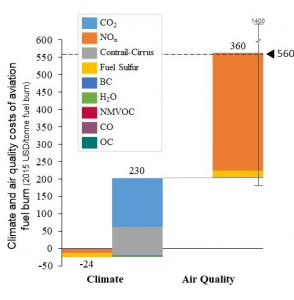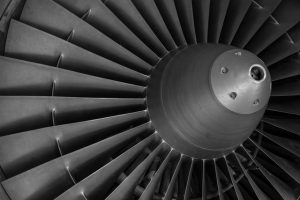New LAE study quantifies air quality and climate impacts of aviation

New research from MIT’s Laboratory for Aviation and the Environment has quantified the climate and air quality impacts of aviation, broken down by emission type, altitude and location. Writing in Environmental Research Letters, the research team examines how this damage can be mitigated, and provides consistent comparative assessments of aviation emissions trade-offs, considering both climate and air quality impacts.
Climate and air quality impacts
Dr Sebastian Eastham, one of the leading researchers on the project, said: “Aviation emissions are an increasingly significant contributor to anthropogenic climate change. They cause five per cent of global climate forcing. When you consider the full flight, which includes emissions from takeoff, cruise and landing, aircraft emissions are also responsible for around 16,000 premature deaths a year from impaired air quality. This is small compared to other sectors, being only around 0.4% of the total deaths attributed annually to global air quality degradation, but is often overlooked in policy analysis.”

Dr Eastham said: “Our results show three components are responsible for 97 per cent of climate and air quality damages per unit aviation fuel burn: air quality impacts of NOx at 58 per cent; climate impacts of CO2 at 25 per cent; and climate impacts of contrails at 14 per cent. It is important to note that the vast majority, around 86 per cent in fact, of the NOx impacts on air quality are due to the emissions from cruise as opposed to the landing and takeoff cycle. These components – cruise NOx emissions, CO2 emissions, and contrails – are therefore primary targets for future strategies to reduce the atmospheric impacts of aviation emissions.”
“We found the air quality impacts of aviation emissions significantly exceed the climate impacts, with air quality impacts being 1.7 to 4.4 times higher than the climate impact per unit of fuel burn. This must be contrasted to ground-based industries, where post-combustion emissions control and access to cleaner fuels is widespread. For example, the climate impacts of the US power sector are of similar magnitude as the air quality impacts following significant declines in co-pollutant emissions over the past 15 years. This points towards potential political and technological opportunities for reducing the atmospheric impacts of the aviation sector.”
Mitigation approaches
 Historically, attempts to address the climate and air quality impacts from aviation have been through changes in policy, technology, and/or operations – improvements to fuel efficiency; more stringent emissions standards; market-based measures to reduce CO2 emissions; or the introduction of sustainable aviation fuels.
Historically, attempts to address the climate and air quality impacts from aviation have been through changes in policy, technology, and/or operations – improvements to fuel efficiency; more stringent emissions standards; market-based measures to reduce CO2 emissions; or the introduction of sustainable aviation fuels.
The study notes that reducing one type of emission can come at the cost of increasing another, either in absolute terms or by limiting potential reductions offered by new technology. Dr Eastham explained: “Some studies have suggested that they could decrease NOx emissions by designing engines with lower pressure ratios and combustor temperatures. However, they find that the resulting loss in thermodynamic efficiency would mean that we need to burn more fuel, meaning more CO2. The impacts from these types of trade-offs need to be quantified, and our study offers a fast way for decision makers to do this. We developed a set of metrics for comparing the climate and air quality impacts of aviation emissions at all flights stages, by estimating the social costs per unit of emitted pollutant. The cost metrics are broken down by flight phase – cruise, landing and take-off – and by the geographical region of emission, both per kg of emission and per kg of fuel burn.”
The research team applied the metrics to evaluate the effects of a global expansion in aviation, consistent in magnitude with its current annual growth. They then used this as a benchmark for three scenarios.
First, they considered a growth scenario with fuel efficiency increases and reductions in NOx emissions factors consistent with 10-year goals. Second, they evaluated the trade-offs between the climate and air quality impacts of one type of engine-based NOx emissions reductions. Finally, they re-assessed the climate and air quality trade-offs of jet fuel desulfurisation.
The paper is available here.